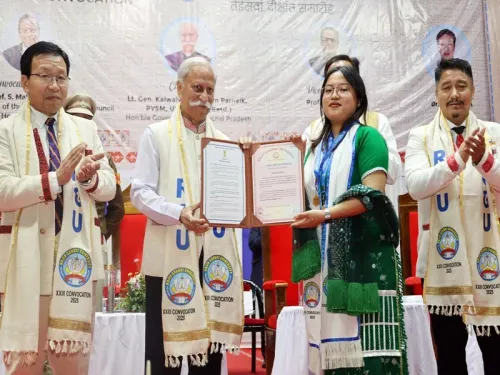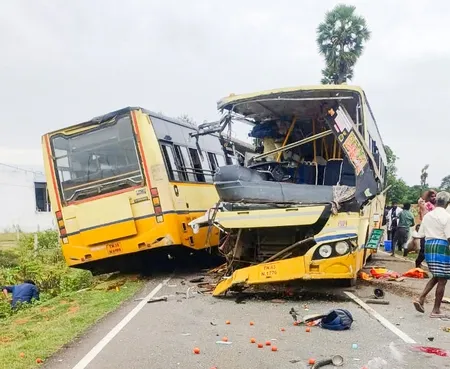How Did the Amarnath Yatra 2025 Become a Zero-Waste Movement?

Synopsis
Key Takeaways
- Over 400,000 devotees participated in the Yatra.
- Zero-landfill approach implemented for waste management.
- 1,300 Safai Mitras deployed for cleanliness.
- Real-time feedback systems enhanced sanitation services.
- Inspiration for eco-conscious practices nationwide.
New Delhi, Aug 19 (NationPress) The Amarnath Yatra 2025 transcended its role as a mere sacred pilgrimage, evolving into a significant campaign for Swachhata and sustainability. With more than 400,000 devotees embarking on the challenging journey to the revered cave at 3,880 meters in the Kashmir Himalayas, the Amarnath Shrine Board, in close collaboration with the Jammu and Kashmir Government, prioritized scientific waste management and plastic-free initiatives to facilitate a zero-landfill, eco-conscious Yatra.
In alignment with the goals of the Swachh Bharat Mission Urban 2.0, a comprehensive range of initiatives was rolled out to ensure a clean, hygienic, and plastic-free atmosphere for the pilgrims.
According to the J&K Housing and Urban Development Department, this initiative was propelled by a meticulously crafted action plan, executed through efficient collaboration among Swachhata Executives, TULIP interns, and volunteers stationed at lodgement centres, langar sites, and Yatra camps.
These individuals advocated for waste segregation, discouraged single-use plastics, and raised awareness about sanitation and hygiene. Real-time feedback on sanitation facilities was collected via QR-coded toilets, while robust waste management systems and extensive awareness campaigns encouraged pilgrims to maintain cleanliness and dispose of waste responsibly.
During the Yatra, approximately 11.67 metric tons of waste were generated daily, comprising 3.67 MT of dry waste and 7.83 MT of wet waste, as per the Amarnath Shrine Board. Remarkably, 100% of this waste was processed. A systematic waste collection approach was established with designated bins, including 1,016 twin-bin stations—blue for dry waste and green for wet waste—strategically placed along the Yatra route.
Moreover, separate bins were designated near female toilets for collecting sanitary waste. A fleet of 65 garbage collection vehicles, including twin-compartment trucks, ensured the smooth, segregated transport of waste to Material Recovery Facilities (MRFs) and compost pits. To maintain cleanliness 24/7 along the Yatra route, nearly 1,300 Safai Mitras were deployed at various key locations.
This comprehensive strategy ensured that all necessary sanitation protocols were upheld to support the numerous yatris undertaking the sacred pilgrimage.
To meet hygiene requirements along the pilgrimage path, over 1,600 mobile toilets were set up, each cleaned twice daily by dedicated sanitation teams.
Real-time user feedback through QR codes yielded over 20,000 responses, facilitating swift improvements and maintaining high service standards.
With its commitment to zero-waste systems, public engagement, and robust urban participation, this Yatra signified a transformative shift towards eco-conscious pilgrimages, inspiring cities across the nation to contribute to the vision of Swachh Bharat.










